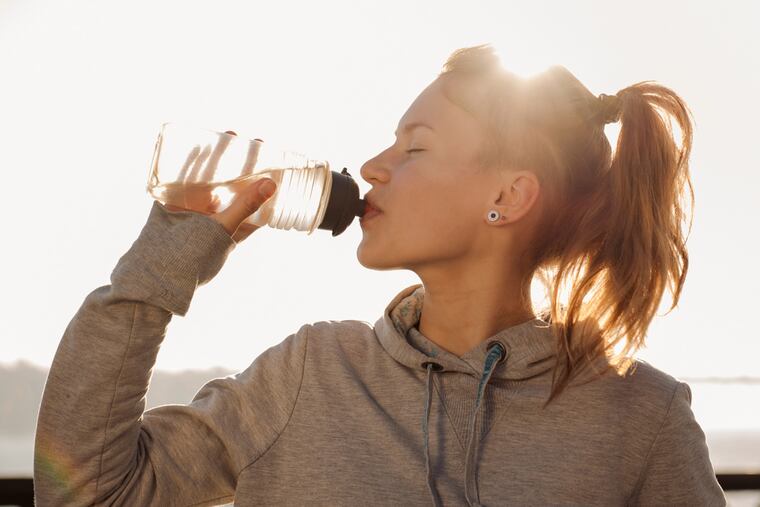What’s the health risk for athletes with overhydrating?
The balance of staying well-hydrated can be challenge for athletes, but unfortunately the opposite of being overhydrated can happen as well.

We've all heard that we need eight cups of water daily, but this amount is not a "one size fits all". The balance of staying well-hydrated can be challenge for athletes, but unfortunately the opposite of being overhydrated can happen as well. Over the past four years, two teen athletes have died from exercise-associated hyponatremia (EAH). This is preventable, but athletes need to learn about how much fluid and types of fluids they need based on their duration and weather conditions of exercise, and on how much they sweat during exercise.
What is exercise-associated hyponatremia?
Hyponatremia means that there is a fluid-electrolyte imbalance causing low blood sodium levels (less than 135 mmol/L). The main electrolytes in sweat are sodium and chloride, with lower levels of potassium, calcium and magnesium. Sodium loss in sweat varies widely in child and adolescent athletes, but losing too much sodium in sweat can cause EAH. This can lead to excess water into the brain, causing swelling and other neurological problems such as confusion, seizure and coma, possibly resulting in death.
EAH primarily occurs in endurance athletes exercising in warm, humid conditions since they are drinking large amounts of water (without sodium) over several hours. Most athletes eat a diet high enough in sodium to off-set the sodium loss in sweat, but even drinking too much fluid at rest too quickly can cause hyponatremia. Others at high risk for hyponatremia are smaller female athletes, less fit athletes, and salty sweaters .
What causes hyponatremia?
Possible causes of hyponatremia include the following:
Excessive fluid intake
Reduced urine output related to exercising in the heat or SIADH
Sodium loss related to having a high sweat rate , poor fitness level
Not eating enough sodium when exercising
Signs and Symptoms of Exercise-Induced Hyponatremia
Stomach upset
Nausea and vomiting
Throbbing headache
Swollen hands & feet
Excessive tiredness
Seizures
Coma
Brain stem rupture leading to death
How much fluid do athletes need?
Thirst alone is not always a good indicator for athletes to be able to balance fluids for their sport, according to the American College of Sports Medicine. The Academy of Nutrition and Dietetics has developed a few guidelines about how to hydrate right. In addition, the Sports Cardiovascular and Wellness Nutrition Practice Group suggest the following:
Begin exercise well-hydrated
- Drink 8-20 ounces of fluid (water or sports drink) an hour before exercise
- One gulp of fluid = approximately 1 ounce of fluid
Drink up to 16-24 ounces of fluid per hour of exercise (4-6 ounces every 15 minutes)
Use water if exercising less than one hour
Consider drinking a sports drink (containing sodium) to replace fluids and electrolytes lost in sweat if exercising longer than one hour or if you are a salty sweater
Check your urine color- clear to light yellow means that you are well-hydrated
Weigh yourself before and after exercise to determine your sweat rate- after exercise drink 16-24 ounces of fluid for every pound lost through sweat
What else do I need to know?
A list of do's and don'ts can help guide athletes, coaches, and parents in the right direction to avoid dehydration as well as exercise-induced hyponatremia, according to the Gatorade Sports Science Institute.